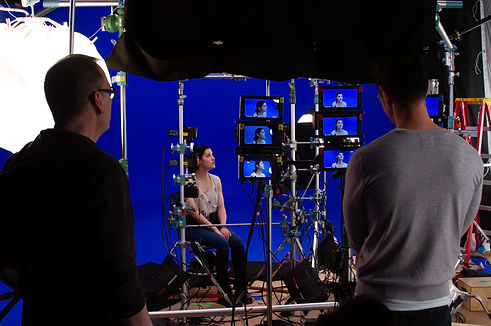About the Author

This website represents the culmination of my time at the University of Texas at Austin receiving my Masters in Media Studies.
I first began to take an interest in machine-human interactions and relationships in Dr. Sharon Strover's "Communication, Technology, and Culture" class, where I was first introduced to the digital influencer Lil Miquela. Miquela was the start of my thinking about the ways that we integrate machines and technology into our daily lives. In following this line of enquiry, I found myself contemplating the way that in taking a recuperative stance toward technology, and in looking at our images of machines and tech through a queer lens, can reveal new modes of being in the world. I found myself transfixed by the ways that these creations are frequently the backdrop that allow humans a way to imagine a different world and a different self. More often than not, these imaginings take on a distinctly counter-hegemonic sensibility.
Halfway through “Communication, Technology, and Culture” (Spring 2020), the COVID-19 pandemic forced us into remote online courses. I’m writing this section on the one-year anniversary of the World Health Organization declaring a worldwide pandemic. Since then, I’ve completed the majority of my Masters remotely.

Queer Activism
Non-hierarchical and dispersed networks of activism in Welcome to Chechnya
Welcome to Chechnya exemplifies two examples of queer activism, both operating in different ways. The queer activism in the film is:
-
Centered on the protection of queer bodies by queer people
-
Non-hierarchical, non-central, and dispersed across time and space.
When David France decided to use deepfakes in Welcome to Chechnya, he contacted a number of activists, namely through Instagram, to lend their faces to protect the Chechen refugees. In the documentary, the explicit intention of deepfakes is to protect the identity of queer bodies as they are smuggled out of an oppressive regime. The volunteers who acted as the survivor’s “human shields” were mainly from New York. Ryan Laney, France’s visual effects supervisor, worked on creating the deepfakes for each survivor. For over a year, he worked at a secret location and offline.
The activist network presented in Welcome to Chechnya and the documentary’s production are both queer in their formation as well. David Isteev, one of the activists responsible for smuggling people out of Chechnya, helps run the network of activists primarily from his cell phone. His number is passed by word-of-mouth amongst gays and lesbians in Chechnya. They then text or call him asking for help to be smuggled out of the country. The use of the messaging platform, WhatsApp, as a tool of resistance further supports my recuperative stance towards technology. This type of fluid construction, mediated by two networks (a network of people and WhatsApp’s messaging platform) rejects bounded linear relationships, instead focusing on flexible and fluid pockets of community within Chechnya. In a roundtable discussion on queer temporalities, Christopher Nealon poses the question:

Click here for more information on how deepfakes are created.
"How are our theorizations of alternate temporalities legible not only as attempts to think through the possibilities of movement and community but also as attempts to think through or around or against the dominant form of the social organization of time, that is, the time of the commodity?" (Dinshaw et al. 188)
Welcome to Chechnya portrays a group of people that not only care deeply for each other but risk their lives daily to enact this care. The relationship between the Chechen activists and survivors operates outside of the normative construction family. They are in constant hiding, moving secretly between safehouses and into neighboring countries. With no clear nucleus, head of the family, or lineage, the relationships between survivors in Welcome to Chechnya are amorphous and spread out amongst a number of countries. Survivors have found asylum in other countries, in hiding in other countries, under the supervision and care of David or Olga in safehouses in Chechnya, or in hiding with only a voice on the other of the WhatsApp call. These relationships are further layered and dispersed across boundary lines with the addition of the activists France enlisted. Welcome to Chechnya serves to create a global web built on a deep sense of compassion, protectiveness, and anonymity to defend and rescue queer Chechens.




